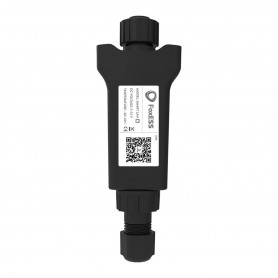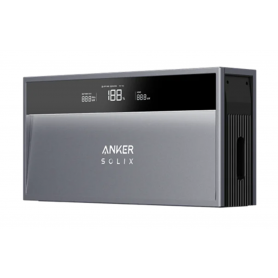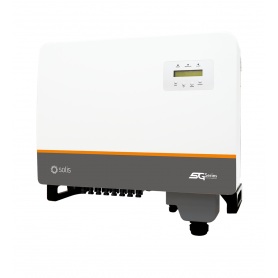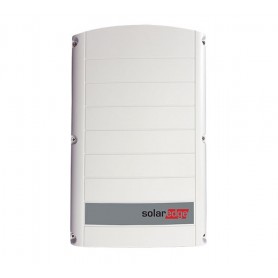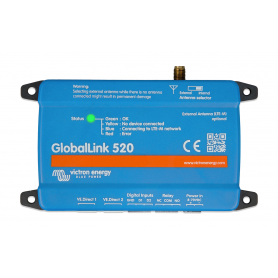Menu
Filter
Solar InvertersThere are 232 products.
Unterkategorien
-
Netzgekoppelte Wechselrichter
-
Hybrid-Wechselrichter
Ein Hybrid-Wechselrichter ist ein Gerät, das den von Sonnenkollektoren erzeugten Gleichstrom (DC) in Wechselstrom (AC) umwandelt, der von Elektrogeräten in Haushalten verwendet wird. Hybrid-Wechselrichter sind auch in der Lage, Strom aus dem Netz in einer Batterie zu speichern und diese gespeicherte Energie zu nutzen, wenn die Solarmodule nicht genügend Strom erzeugen.
Hybrid-Wechselrichter sind eine gute Wahl für Menschen, die nach einer Möglichkeit suchen, ihre Solarstromanlage in ihr bestehendes Stromnetz zu integrieren. Hybrid-Wechselrichter können dazu beitragen, Ihre Stromrechnung zu senken und im Falle eines Stromausfalls auch Notstrom bereitzustellen.
Hier sind einige der Vorteile von Hybrid-Wechselrichtern:
- Einsparungen bei Ihrer Stromrechnung: Hybrid-Wechselrichter können Ihnen helfen, Ihre Stromrechnung zu senken, indem sie den von Ihren Solarmodulen erzeugten Strom wieder in das Netz einspeisen.
- Notstromversorgung: Hybrid-Wechselrichter können im Falle eines Stromausfalls Notstrom bereitstellen, indem sie den in der Batterie gespeicherten Strom nutzen.
- Flexibilität: Hybrid-Wechselrichter sind flexibler als herkömmliche Wechselrichter, da sie mit einer Vielzahl von Solarstromsystemen verwendet werden können.
Hier sind einige der Nachteile von Hybrid-Wechselrichtern:
- Teurer: Hybrid-Wechselrichter sind teurer als herkömmliche Wechselrichter.
- Schwieriger zu installieren: Hybrid-Wechselrichter sind schwieriger zu installieren als herkömmliche Wechselrichter.
Wenn Sie eine Solaranlage in Betracht ziehen, ist es wichtig festzustellen, ob ein Hybrid-Wechselrichter für Ihre Bedürfnisse geeignet ist. Wenn Sie nach einer Möglichkeit suchen, Ihre Solaranlage in Ihr bestehendes Netz zu integrieren und Ihre Stromrechnung zu senken und Ihr Haus vor Stromausfällen zu schützen, ist ein Hybrid-Wechselrichter eine gute Wahl.
-
Kommunikation und Überwachung
Solarenergiekommunikation und -überwachung sind Systeme zur Überwachung und Steuerung von Solarenergiesystemen. Diese Systeme können verwendet werden, um die Leistung der Solarstromanlage zu überwachen, Probleme zu erkennen und die Anlage aus der Ferne zu steuern.
Es stehen verschiedene Arten von Solarkommunikations- und Überwachungssystemen zur Verfügung, jedes mit seinen eigenen einzigartigen Eigenschaften. Die gebräuchlichsten Arten von Systemen sind:
- Lokales Überwachungssystem: Diese Art von System verwendet einen lokalen Monitor, um die Leistung der Solarstromanlage zu verfolgen. Der Monitor wird in der Regel in der Nähe der Solaranlage installiert und kann verwendet werden, um Daten über die Leistung der Anlage anzuzeigen, wie z. B. die erzeugte Energiemenge, die Temperatur der Solarmodule und den Status des Wechselrichters.
- Fernüberwachungssystem: Diese Art von System verwendet eine Internetverbindung, um die Leistung der Solarstromanlage zu überwachen. Das System kann von jedem Ort mit Internetzugang gesteuert werden und kann verwendet werden, um Daten über die Leistung des Systems anzuzeigen, wie z. B. die erzeugte Energiemenge, die Temperatur der Sonnenkollektoren, den Status des Wechselrichters und eventuelle Probleme mit dem System.
- Kombiniertes Überwachungssystem: Diese Art von System kombiniert die Funktionen eines lokalen Überwachungssystems und eines Fernüberwachungssystems. Das System kann verwendet werden, um Daten über die Leistung des Systems anzuzeigen, wie z. B. die erzeugte Energiemenge, die Temperatur der Sonnenkollektoren, den Status des Wechselrichters und eventuelle Probleme mit dem System.
Solare Kommunikations- und Überwachungssysteme können verwendet werden, um die Leistung Ihrer Solarstromanlage zu verbessern, Probleme zu erkennen und das System aus der Ferne zu steuern. Wenn Sie eine Solaranlage in Betracht ziehen, ist es wichtig, eine zu wählen, die Ihren Bedürfnissen entspricht.
-
Optimizers
-
Solar Interface

Ein Solaroptimierer ist ein Gerät, das in einer Solaranlage verwendet wird, um die Effizienz der Sonnenkollektoren zu verbessern. Optimierer werden zwischen den Solarmodulen und dem Wechselrichter platziert und stellen sicher, dass jedes Solarmodul mit seiner maximalen Leistung arbeitet, unabhängig vom Schatten oder anderen Faktoren, die die Leistung eines Solarmoduls beeinflussen können.
Optimierer können den Ertrag einer Solaranlage um 10-20% verbessern. Sie können auch die Lebensdauer der Sonnenkollektoren verlängern, indem sie die Temperatur regulieren und die Spannung stabilisieren.
Optimierer sind eine gute Wahl für Besitzer von Solaranlagen, die das Beste aus ihrer Investition herausholen möchten. Sie können auch eine gute Wahl für Besitzer von Solaranlagen sein, die mit Schatten oder anderen Faktoren zu kämpfen haben, die die Leistung ihrer Solarmodule beeinträchtigen können.
Hier sind einige der Vorteile des Einsatzes von Solaroptimierern:
- Effizienzsteigerung: Optimierer können den Ertrag einer Solaranlage um 10-20% verbessern.
- Optimierte Leistung: Optimierer stellen sicher, dass jedes Solarmodul mit seiner maximalen Leistung arbeitet, unabhängig von Schatten oder anderen Faktoren, die die Leistung eines Solarmoduls beeinflussen können.
- Verlängerte Lebensdauer: Optimierer können die Lebensdauer der Solarmodule verlängern, indem sie die Temperatur regulieren und die Spannung stabilisieren.
- Verbesserte Überwachung: Optimierer bieten umfassende Überwachungsfunktionen, die es Solaranlagenbesitzern ermöglichen, die Leistung ihrer Anlage zu verfolgen und Probleme zu identifizieren.
Wenn Sie die Installation einer Solarstromanlage in Betracht ziehen, ist es ratsam, den Einsatz von Optimierern in Betracht zu ziehen. Optimierer können Ihnen helfen, das Beste aus Ihrer Investition herauszuholen und die optimale Leistung Ihrer Solaranlage zu gewährleisten.
-
Mikrowechselrichter
Solar-Mikrowechselrichter sind kleine elektronische Geräte, die den von einzelnen Solarmodulen erzeugten Gleichstrom (DC) in Wechselstrom (AC) umwandeln. Dieser Wechselstrom kann dann verwendet werden, um Ihr Haus oder Geschäft mit Strom zu versorgen oder an das Netz zurückzuverkaufen.
Solar-Mikrowechselrichter sind eine relativ neue Technologie, aber sie sind in den letzten Jahren immer beliebter geworden. Dies ist auf mehrere Vorteile zurückzuführen, die sie gegenüber herkömmlichen String-Wechselrichtern bieten.
Vorteile von Solar-Mikrowechselrichtern:
- Erhöhte Energieproduktion: Solar-Mikrowechselrichter können die Energieproduktion maximieren, indem sie den Gleichstrom von jedem Solarmodul unabhängig voneinander umwandeln. Das bedeutet, dass die Gesamtleistung der Solaranlage nicht durch das schwächste Modul beeinträchtigt wird.
- Verbesserte Verschattungsleistung: Solar-Mikrowechselrichter können unter verschatteten Bedingungen effektiv betrieben werden. Dies liegt daran, dass sie den Gleichstrom von jedem Modul unabhängig voneinander umwandeln können, auch wenn einige der Module verschattet sind.
- Höhere Sicherheit: Solar-Mikrowechselrichter arbeiten mit einer niedrigen Spannung, was sie sicherer macht als herkömmliche String-Wechselrichter. Dies liegt daran, dass das Risiko eines Stromschlags bei einem Fehler im System geringer ist.
- Einfachere Installation: Solar-Mikrowechselrichter sind in der Regel einfacher zu installieren als herkömmliche String-Wechselrichter. Das liegt daran, dass sie kleiner und leichter sind und direkt an den Solarmodulen montiert werden können.
Nachteile von Solar-Mikrowechselrichtern:
- Höhere Kosten: Solar-Mikrowechselrichter sind teurer als herkömmliche String-Wechselrichter. Das liegt daran, dass sie komplexer herzustellen und zu installieren sind.
- Mehr Komponenten: Solar-Mikrowechselrichter benötigen mehr Komponenten als herkömmliche String-Wechselrichter. Dies kann das System komplizierter machen und die Wahrscheinlichkeit eines Ausfalls erhöhen.
Insgesamt sind Solar-Mikrowechselrichter eine vielversprechende Technologie, die mehrere Vorteile gegenüber herkömmlichen String-Wechselrichtern bieten kann. Allerdings sind sie auch teurer und aufwendiger.
Hier sind einige der führenden Hersteller von Solar-Mikrowechselrichtern:
- Enphase Energie
- SolarEdge-Technologien
- SMA Solar Technology AG
- Hoymiles Power Electronics Inc.
- Chilicon Power Electronics Corp

 de
de
 en
en  es
es  fr
fr  it
it  nl
nl 



















 United States.
United States.







